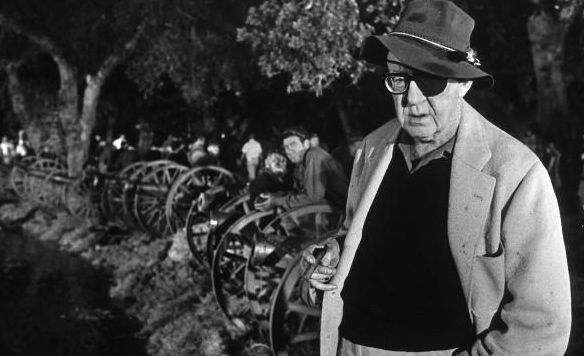
Paul Zahl's thoughts on the episode of How the West Was Won directed by John Ford (a few spoilers here), with some photographs he took recently of the filming locations:
JOHN FORD'S “CIVIL WAR”
John Ford's part. It is his conception of the Civil War, in which Carroll
Baker bids farewell to her son forever as he marches off to war, the Battle of Shiloh rages, during which her husband, the
Jimmy Stewart character, is killed off, then her
character dies (off screen), and George Peppard comes home to find only
his brother still there, lovingly watching over the family farm and
also the family graves. Peppard's character leaves, again, and his
brother weeps with desolation and resignation.
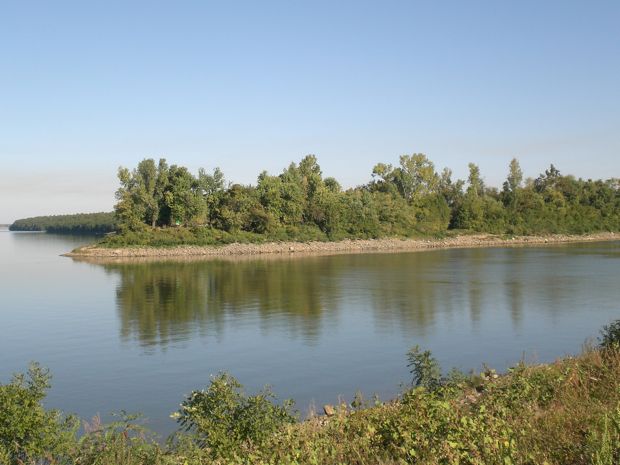
the bank of the Cumberland River at Smithland, Kentucky, with Georgian and
early 19th Century houses — inns, churches, warehouses, and one “plantation” house called “Strait” — on both sides of me and behind
me. Just beyond the trees on the spit of land across the river is
where the farm house of Carroll Baker and George Peppard and his little
brother was constructed. That area is now farmland. Also, just
behind the trees, they constructed the log fence along the road down
which Andy Devine rode at the beginning of scene one, and down which
George Peppard walked at the end of scene one, the family dog trying to
follow him, plaintively.
Although the river in front of the spit of land is the
Cumberland, on the other side of it, in the far left background, is
the Tennessee. Baker and the other actors would be ferried across to
the location each morning, from the spot where this photograph was
taken. The place is still and wonderfully quiet.
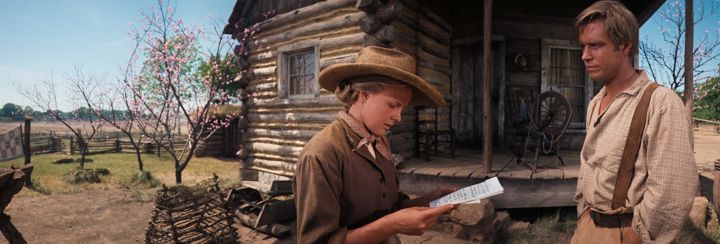
distilled emotion in the classic Ford manner. Carroll Baker carries a
black scarf as she says her dense and underplayed
farewell to Peppard and as she addresses the dead in the family
graveyard. The second scene on the farm is like a silent movie, with
almost no dialogue, and Peppard plays this particular part — his
discovery that his mother has died — laconically and therefore
movingly. The director's use of the Cinerama process seems
instinctive, with Ford hiding the screen lines by means of poles and
posts mostly. I find these two short scenes on the “Rawlings” farm to be
as mighty as any he ever did.
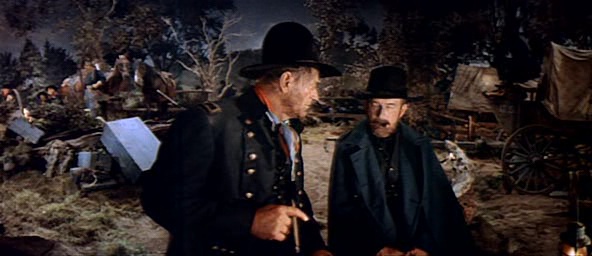
the Battle of Shiloh. It includes a somewhat cynical exchange between
General Grant and General Sherman, and a contrived encounter that
George Peppard, slightly wounded on the Union side, has with Russ
Tamblyn, a Confederate soldier. They are both quenching their burning
thirst at “Bloody Pond”, until they realize that the water has an odd color . . .
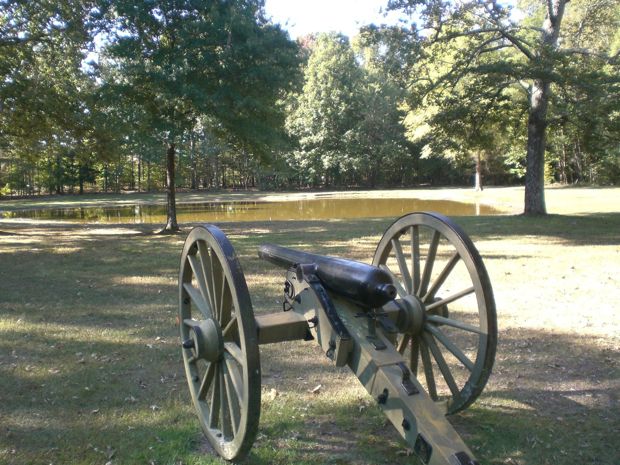
Above is Bloody Pond as it looks today. It has changed little since the
night of April 6th, 1862, which is the night depicted in the middle section of
Ford's Civil War sequence. You can't
park anywhere near the place today, due to improvements being made by
the Park Service to the loop road; so you have to approach Bloody Pond
through the woods on the other side of the Pond (from this angle). You
walk about a third of a mile through woodland, then come right out on
the clearing where the Pond is. Now it is muddy and yellowish-brown.
That night it was red.
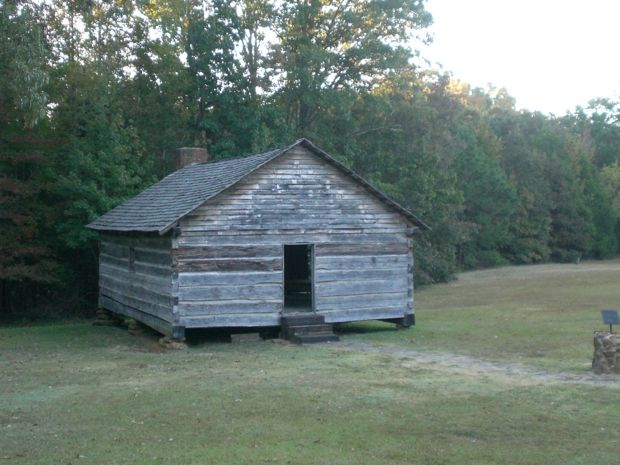
Ford also depicts the battlefield surgical station, as well as the tiny Shiloh Church — above, as it is today. This is where the fighting reached its apogee on the first day of the battle. It is a reconstruction (but on the exact site) of Shiloh
Methodist Church, which was destroyed during the battle. It is
depicted at the top of the frame at the beginning of the nighttime
section of Ford's Shiloh sequence.
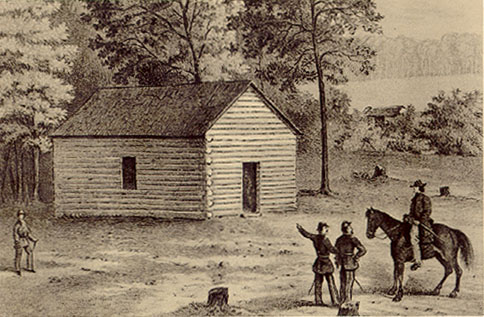
They weren't able to
have church that Sunday morning April 6, 1862 . . . but . . . the day I was
there, a couple of weeks ago, I went into the current United Methodist
Church of Shiloh, which is the active church, located to the right of what you
see in the photograph, and peered through its glass doors. Behold!: a
dead woman was there. There had been a “viewing” the night before, and
there, right below the altar, in an open casket surrounded by bouquets
of flowers and waiting for a late morning church service, was a
peaceful person of middle years, lying in death, for all to see. It
was as if the entire scene were crying, “This is not abstract, what you
are seeing. It's not re-enactment time. These things really
happened. And they still do.”
Ford's Shiloh sequence feels “staged” to me, and I've felt
this ever since the days when Lloyd Fonvielle and I saw this movie in
its first run at the Uptown Theater on Connecticut Avenue, not so many
blocks from the Obama White House.
[See my thoughts on the rest of the film here.]

When I finish viewing and reading all of your yearly posts, I’m going to begin all over again. That’s how important they are to me.
My sister Dianne was an extra in the first scene of the film, which was filmed at Smithland, KY. My brother David ferried some of the minor actors across the river in his small ski boat to film some of the scenes. Walter Brennan and Agnes Moorehead both caught a ride in his boat. David said that Walter Brennan was one of the most foul mouthed people he had ever met. All he did was complain about not being on the larger boat reserved for the A list actors. One time his wig blew off and landed in the bottom of the boat where it became wet and muddy. Brennan picked up the wig, cleaned it off and put it back on swearing the whole time.
My thoughts exactly on the two farm scenes, from the first time I saw them at age 9 in 1963 until night before last on Blu-ray smiley-box 4K.. Small wonder I wanted to grow up and be like Zeb Rawlings. Ford had that effect. The Pony Express shots are also among my favorites.